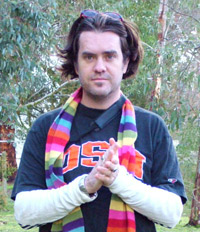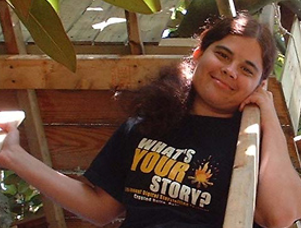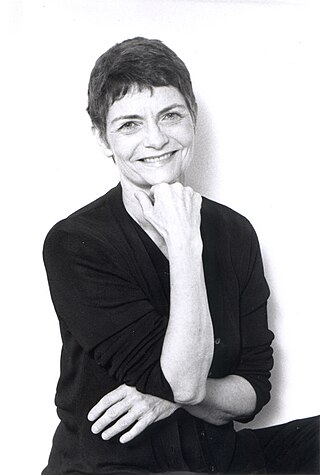Digital poetry is a form of electronic literature, displaying a wide range of approaches to poetry, with a prominent and crucial use of computers. Digital poetry can be available in form of CD-ROM, DVD, as installations in art galleries, in certain cases also recorded as digital video or films, as digital holograms, on the World Wide Web or Internet, and as mobile phone apps.
net.art refers to a group of artists who have worked in the medium of Internet art since 1994. Some of the early adopters and main members of this movement include Vuk Ćosić, Jodi.org, Alexei Shulgin, Olia Lialina, Heath Bunting, Daniel García Andújar, and Rachel Baker. Although this group was formed as a parody of avant garde movements by writers such as Tilman Baumgärtel, Josephine Bosma, Hans Dieter Huber and Pit Schultz, their individual works have little in common.
Neo-Dada was a movement with audio, visual and literary manifestations that had similarities in method or intent with earlier Dada artwork. It sought to close the gap between art and daily life, and was a combination of playfulness, iconoclasm, and appropriation. In the United States the term was popularized by Barbara Rose in the 1960s and refers primarily, although not exclusively, to work created in that and the preceding decade. There was also an international dimension to the movement, particularly in Japan and in Europe, serving as the foundation of Fluxus, Pop Art and Nouveau réalisme.
Electronic literature or digital literature is a genre of literature where digital capabilities such as interactivity, multimodality or algorithmic text generation are used aesthetically. Works of electronic literature are usually intended to be read on digital devices, such as computers, tablets, and mobile phones. They cannot be easily printed, or cannot be printed at all, because elements crucial to the work cannot be carried over onto a printed version.

Nick Montfort is a poet and professor of digital media at MIT, where he directs a lab called The Trope Tank. He also holds a part-time position at the University of Bergen where he leads a node on computational narrative systems at the Center for Digital Narrative. Among his publications are seven books of computer-generated literature and six books from the MIT Press, several of which are collaborations. His work also includes digital projects, many of them in the form of short programs. He lives in New York City.
Codework is "a type of creative writing which in some way references or incorporates formal computer languages within the text. The text itself is not necessarily code that will compile or run, though some have added that requirement as a form of constraint." The concept of and term 'codework' was originally developed by Alan Sondheim, but is also practiced by and used to refer to the work of other Internet artists such as Mez Breeze, Talan Memmott, Ted Warnell, Brian Lennon, and John Cayley. Scholar Rita Raley uses the term "[net.writing]," which she defines as "the use of the contemporary idiolect of the computer and computing processes in digital media experimental writing." Raley sees codework as part of a broader practice exploring "the art of code."
Alan Sondheim is a poet, critic, musician, artist, and theorist of cyberspace from the United States.
Melinda Rackham is an Australian writer, artist and curator.

Jason Nelson is a digital and hypermedia poet and artist. He is Associate Professor of Digital Culture and a PI at the Center for Digital Narrative at the University of Bergen, where he was also a Fulbright Fellow from 2016-17. Until 2020 he was a lecturer on Cyberstudies, digital writing and creative practice at Griffith University in Queensland, Australia. He is best known for his artistic flash games/essays such as Game, game, game and again game and I made this. You play this. We are Enemies. He has worked on the Australia Council of the Arts Literature Board and the Board of the Electronic Literature Organization based at MIT.
Mez Breeze is an Australian-based artist and practitioner of net.art, working primarily with code poetry, electronic literature, mezangelle, and digital games. Born Mary-Anne Breeze, she uses a number of avatar nicknames, including Mez and Netwurker. She received degrees in both Applied Social Science [Psychology] at Charles Sturt University in Bathurst, Australia in 1991 and Creative Arts at the University of Wollongong in Australia in 2001. In 1994, Breeze received a diploma in Fine Arts at the Illawarra Institute of Technology, Arts and Media Campus in Australia. As of May 2014, Mez is the only Interactive Writer and Artist who is a non-USA citizen to have her comprehensive career archive housed at Duke University, through their David M. Rubenstein Rare Book & Manuscript Library.
Cyberformance refers to live theatrical performances in which remote participants are enabled to work together in real time through the medium of the internet, employing technologies such as chat applications or purpose-built, multiuser, real-time collaborative software. Cyberformance is also known as online performance, networked performance, telematic performance, and digital theatre; there is as yet no consensus on which term should be preferred, but cyberformance has the advantage of compactness. For example, it is commonly employed by users of the UpStage platform to designate a special type of Performance art activity taking place in a cyber-artistic environment.
Micha Cárdenas, stylized as micha cárdenas, is an American visual and performance artist who is an assistant professor of art and design, specializing in game studies and playable media, at the University of California Santa Cruz. Cárdenas is an artist and theorist who works with the algorithms and poetics of trans people of color in digital media.

Deena Larsen is an American new media and hypertext fiction author involved in the creative electronic writing community since the 1980s. Her work has been published in online journals such as the Iowa Review Web, Cauldron and Net, frAme, inFLECT, and Blue Moon Review. Since May 2007, the Deena Larsen Collection of early electronic literature has been housed at the Maryland Institute for Technology in the Humanities.

Stephanie Strickland is a poet living in New York City. She has published ten volumes of print poetry and co-authored twelve digital poems. Her files and papers are being collected by the David M. Rubenstein Rare Book And Manuscript Library at Duke University.
Game, Game, Game, and again Game is a digital poem and game by Jason Nelson, published on the web in 2007. The poem is simultaneously played and read as it takes the form of a quirky, hand-drawn online platform game. It was translated into French by Amélie Paquet for Revue Blueorange in 2010. Its sequel is I made this. You play this. We are Enemies (2009).

María Mencía is a Spanish-born media artist and researcher working as a Senior Lecturer at Kingston University in London, United Kingdom. Her artistic work is widely recognized in the field of electronic literature, and her scholarship on digital textuality has been widely published. She holds a Ph.D. in Digital Poetics and Digital Art at the Chelsea College of Arts of the University of the Arts London and studied English Philology at the Complutense University of Madrid.

All the Delicate Duplicates is a single player first-person psychological/exploration game co-developed by Mez Breeze and Andy Campbell. Produced by The Space, One to One Development Trust - Dreaming Methods, and Mez Breeze Design, the game was published for Microsoft Windows in February 2017. It contains a non-linear story that's discovered through interactive elements and a text-based backstory.
John Howland Cayley is a Canadian pioneer of writing in digital media as well as a theorist of the practice, a poet, and a Professor of Literary Arts at Brown University.
Lexia to Perplexia is a poetic work of electronic literature published on the web by Talan Memmott in 2000. The work won the trAce/Alt-X New Media Writing Award that year.





